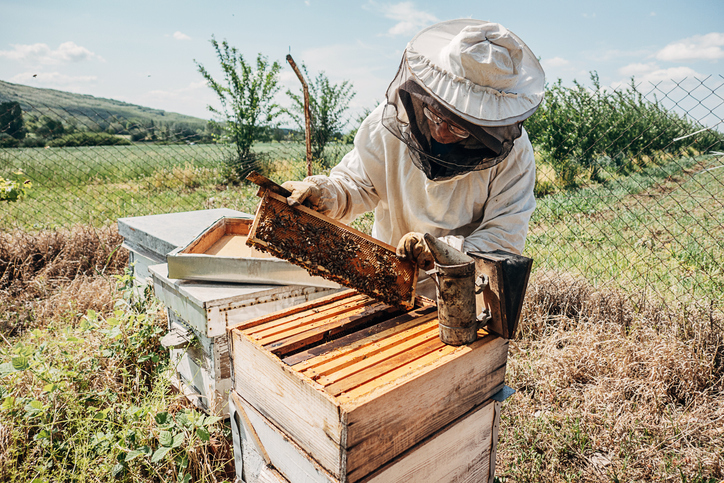Honey is not just a sweet delight; it’s a remarkable testament to the wonders of nature. The process by which honey is made is both intricate and fascinating, involving the collective effort of thousands of worker bees. Whether you’re a nature enthusiast, a foodie, or someone who values natural health products, understanding how honey is produced can deepen your appreciation for this golden nectar. Let’s take a journey from flower to jar and explore the incredible world of honey production.
The Journey Begins: Foraging for Nectar
The process of honey creation starts with foraging. Worker bees, also known as forager bees, leave the hive in search of flowers rich in nectar. These industrious insects can travel up to five miles in a single trip, visiting hundreds of flowers. Equipped with specialized organs called proboscises, bees suck nectar from flowers and store it in their “honey stomachs,” a separate compartment from their digestive stomachs.
The Role of Pollen
While nectar collection is the primary goal, bees also collect pollen. Pollen serves as a protein source for the bee colony, particularly for developing larvae. As bees visit flowers, they inadvertently transfer pollen from one flower to another, aiding in plant pollination—a critical ecological service that ensures the reproduction of flowering plants.
The Hive: Where Magic Happens
Depositing the Nectar
Upon returning to the hive, forager bees pass the collected nectar to house bees through a process called trophallaxis. The house bees then deposit the nectar into hexagonal beeswax cells. This is where the transformation of nectar into honey begins.
Nectar to Honey: The Enzymatic Process
The conversion of nectar into honey involves the addition of enzymes. House bees regurgitate the nectar and mix it with enzymes from their saliva. These enzymes break down the complex sugars in nectar into simpler sugars like glucose and fructose, making the nectar less prone to crystallization and easier to digest.
Evaporation: Reducing Water Content
Nectar is initially around 70-80% water, but honey is less than 20% water. To achieve this, bees fan the nectar-filled cells with their wings to increase airflow and promote evaporation. This dehydration process thickens the nectar, transforming it into the viscous honey we recognize.
Capping and Storage
Sealing the Cells
Once the nectar has sufficiently thickened, bees cap each cell with beeswax to seal it off from air and moisture. This capping process preserves the honey, allowing it to be stored indefinitely without spoiling.
Honeycomb Structure
The famed hexagonal structure of the honeycomb is an example of natural engineering at its best. These hexagons maximize storage space while minimizing the amount of beeswax needed, providing a highly efficient storage solution.
Harvesting Honey: From Hive to Jar
Beekeepers play a crucial role in honey production, ensuring the well-being of bee colonies while harvesting honey sustainably.
Inspecting the Hive
Before harvesting, beekeepers inspect the hive to ensure that it is healthy and that there is sufficient honey to sustain the colony through periods when nectar is scarce.
Extracting the Honey
Beekeepers use specialized tools to remove the wax caps from the honeycomb cells. The frames are then placed in a honey extractor, a centrifuge that spins the frames to draw out the honey.
Filtering and Bottling
The extracted honey is strained to remove any remaining wax or debris. It is then either bottled directly or further processed (e.g., pasteurized or whipped, depending on the type of honey being produced).
The Nutritional and Health Benefits of Honey
Honey is more than just a natural sweetener; it’s a nutritional powerhouse rich in antioxidants, vitamins, and minerals. It has been used for centuries for its medicinal properties, such as soothing sore throats, providing energy, and even aiding in wound healing due to its antibacterial properties.
Raw Honey vs. Processed Honey
Raw honey is honey in its purest form, containing bee pollen, propolis, and other natural compounds that provide extra health benefits. Processed honey, on the other hand, may be heated and filtered, which can reduce its nutritional value. When possible, opt for raw, organic honey to reap the maximum health benefits.
Supporting Bees and Sustainable Honey Production
As consumers, we can play a part in supporting sustainable honey production and protecting bee populations.
Buy Local and Organic
Purchasing honey from local beekeepers who use sustainable practices helps support local economies and ensures that bees are treated with care. Organic honey is produced without the use of synthetic pesticides and antibiotics, making it a healthier choice for both you and the environment.
Plant Bee-Friendly Gardens
By planting a variety of flowers that bloom throughout the growing season, you can provide bees with a consistent source of nectar and pollen. Native plants are particularly beneficial as they are well-suited to local climates and ecosystems.
A Sweet Miracle of Nature
The journey of honey from flower to jar is a remarkable process that highlights the intricate and cooperative nature of bee colonies. Understanding how honey is made can deepen our appreciation for this natural wonder and encourage us to support sustainable practices that protect bees and their habitats. So, the next time you drizzle honey on your toast or stir it into your tea, take a moment to savor the incredible journey that brought this sweet nectar to your table.

